Bihar ranks third in the largest populated states of India. Along with its huge population, comes a variety of cultures and traditions. Let us look at some of the festivals that make Bihar the state it is known to be.
Bihar
Bihar - Festival Celebration Mixed with Rich Culture
1) Chhath Puja
Chhath Puja is one of the most celebrated festivals in Bihar. The rising and setting sun is worshipped. Fasting is for the prosperity and happiness of one’s family. Those who fast are called “Vrati” Chhath Puja is a four-day festival, during which fasting without water is on the second and third days. On the second day, kheer made of rice and jaggery is eaten in the evening. Rice pitha and ghee roti are distributed as Prasad. Food is cooked using mud or bronze vessels over the mudstone. We have some recommendations for mud vessels https://amzn.to/3Rrlxzp and bronze vessels https://amzn.to/3UVbTb6
During this festival, there is enthusiasm everywhere. Preparations begin in advance with the cleaning of houses and vessels, etc.
When– October or November
Where– Bihar
Experience– Devotional songs are played, and folk dances performed. Women fast and worship the Sun god by standing in a water body.
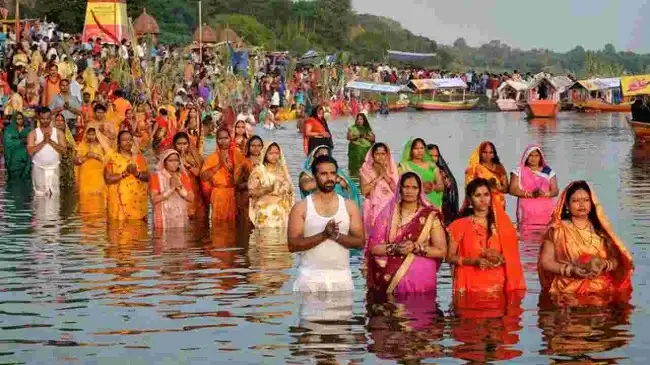
Devotees worhsipping the sun during Chhath Puja. Photo credit: newsd.in
2) Sama Chakeva
Sama Chakeva is a festival of the Mithila region in Bihar. According to religious scriptures, Sama and Chakeva were siblings. The daughter was falsely accused and turned into a bird by her father. Her brother’s love made him fight for justice and thus turned her into human form. The festival honors the bond between brother and sister. On this occasion, the brothers dig soil from the field that is brought into the village by the sister. Then idols of sama and chakeva in the form of birds are made from it. The idols are decorated, and then rituals are performed on them. Later, they are submerged in rivers. The festival also marks the entry of winter migratory birds from the Himalayas.
When– November
Where– Mithilanchal
Experience– Traditional songs are sung, and staple food cooked in mustard oil. People rejoice as they wish a healthy return for the birds next year.

Women performing rituals for Sama Chakeva. Photo credit: madhepuraabtak.com
3) Rajgir Mahotsav
Rajgir Mahotsav was started in 1986. It highlights the rich heritage of Rajgir. Famous as a music and dance festival organized by the Department of Tourism, Bihar. Well-known national artists add to the beauty of the festival with their performances. If you are a dance lover, this is the place to be. Don’t forget to carry your camera to capture all these dance performances. We recommend an easy-to-carry one like https://amzn.to/3romkGA
People from all over the state partake with a lot of interest and enthusiasm. The occasion is nothing less than a carnival. Besides performances, there are also food stalls and fun zones. Entrepreneurs from various states set up stalls to display their craft.
When– In the last week of October for a duration of 3 days
Where– Rajgir
Experience– Folk dance, opera, instrumental music, and classical songs can be enjoyed. It is the best place to savor Indian culture.
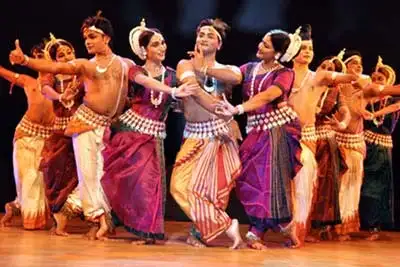
Dance performances at Rajgir Mahotsav. Photo credit: holyvoyages.com
4) Bihula
Bihula is also known as Vishari Puja. During this festival, devotees pray to Goddess Mansa for the welfare and protection of their families.The legend behind the festival is of a woman dedicated to her husband and goddess together. Her husband dies on the night of their wedding from a snakebite, due to a conspiracy by Mansa. The woman then traveled with her dead husband to heaven and pleaded with God. She was promised her husband in exchange for her Father-in-law giving divine offerings. He gave in, and thus Mansa became a goddess in heaven. Manjusha art is the highlight of this festival. There is a captivating book about Manjusha art which you can buy here https://amzn.to/3rndlp8
When– August
Where– Bhagalpur
Experience– The festival is dominated by arts, plays, crafts, and shows which depict snakes at their center.
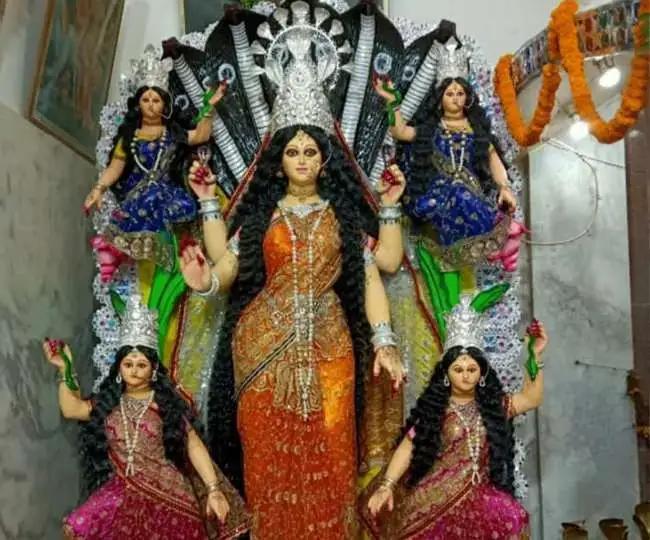
Worship during Bihula festival. Photo credit: jagran.com
5) Sonepur cattle fair
Sonepur cattle fair is known to be Asia’s largest cattle fair. There are more than 5000 stalls, and it is at the confluence of the Gandak and Ganga Rivers. The origin of the Sonepur cattle fair dates back to the 4th century B.C. Buffaloes, donkeys, ponies, Persian horses, goats, and rabbits are displayed and sold at the fair. Various cultural programs are organized by national and international artists. The sonepur cattle fair is conducted annually.
When– November
Where– Sonepur
Experience– Although the trading of elephants is banned; it is worth visiting to see the decorated elephants parading around and horses galloping. The process of cattle trading is unique in itself.
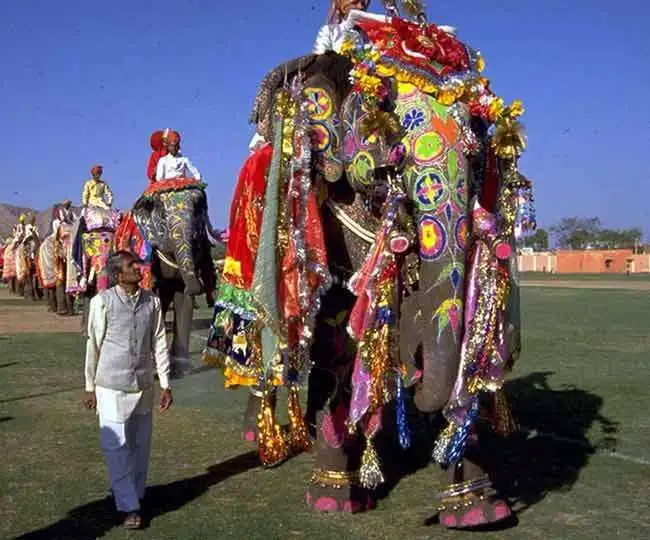
Elephants decorated for Sonepur Cattle fair. Photo credit: jagran.com
6) Malmas mela
Malmas Mela holds religious importance. It is also known as Adhikmas or Purshottam. This event is attended by devotees in large numbers. The religious belief is that 33 gods and goddesses belonging to the Hindu religion are present during Malmas Mela. Black crows are not seen in the sky during this month-long period. Legend says the King invited all the gods and goddesses but forgot to invite the black crows. Hence, they are not present during this time. Devotees arrive from far and wide to take a bath in hot water springs to wash off their sins.
When– May, June, or July once every three years.
Where– Rajgir, Bihar
Experience– The festival continues for a month, and the whole city has worshippers and a positive atmosphere. Devotees traveling from far and wide to take a dip in the hot water springs are the highlight of the festival.

Crowds gathered at Malmas Mela. Photo credit: indiatv.in
7) Pitrapaksh Mela
Pitrapaksh Mela is attended by lakhs of people every year. It is considered to be a festival of souls. Rituals are performed to pay homage to one’s ancestors and offer salvation to their souls. It is also to ask for forgiveness and get rid of any curses. Pind daan is done in Falgu River. Some people perform rituals for one day, while others do it for 17 days. It brings peace to the souls of ancestors. As part of rituals, food is cooked in copper/silver vessels and kept in cups made from banana leaves or dried leaves. If a crow flies and eats the food, it is accepted. The bird is supposed to be a messenger of the ancestors. We recommend these copper vessels for cooking https://amzn.to/3E8dV1O
When– September
Where– Gaya
Experience– It is a sight to see the love people have for their ancestors, and the lengths of sacrifice they undertake for their peace like shaving the head, eating only particular food, etc.
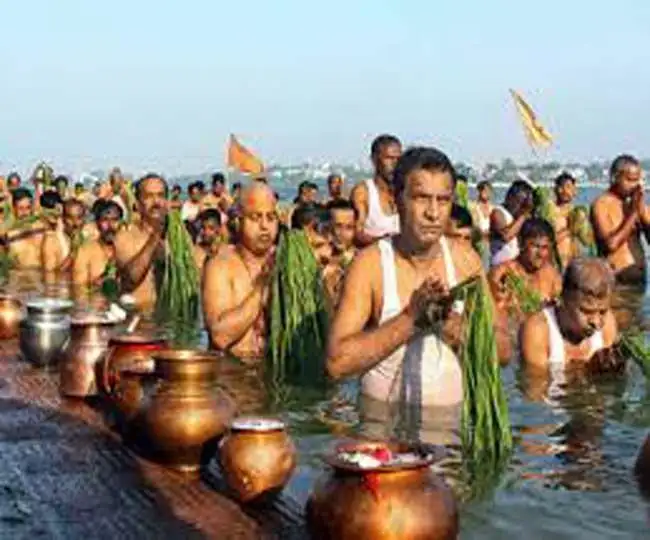
Devotees doing pindaan at Pitrapaksh mela. Photo credit: jagran.com










